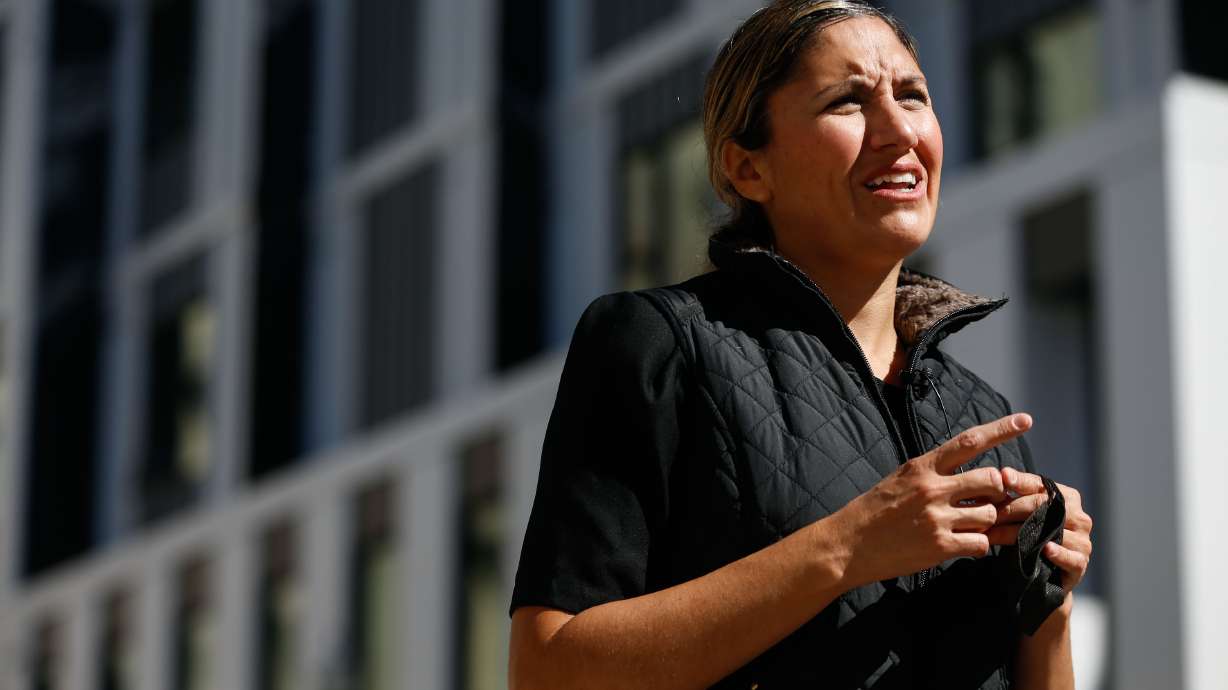Estimated read time: 4-5 minutes
This archived news story is available only for your personal, non-commercial use. Information in the story may be outdated or superseded by additional information. Reading or replaying the story in its archived form does not constitute a republication of the story.
SALT LAKE CITY — The Redevelopment Agency of Salt Lake City released $8 million in funding Tuesday for the construction and preservation of affordable housing projects. The city continues to experience increasing economic inequality while housing rates soar faster than the incomes of residents.
"This is the commitment that we show with the resources that we have to provide solutions to this statewide housing crisis that we're having, it might not be the whole solution but it's the most that anybody has done," Ana Valdemoros, chairwoman of the RDA board of directors and a city councilwoman, said at a press conference Tuesday. "I really appreciate the other council members, the mayor and the staff, for focusing on the resources that we have and dispersing it so that we can at least make a dent for Salt Lake City residents."
The $8 million will be allocated through the RDA's Housing Development Loan Program. A portion of that funding, $2.7 million, is dedicated to projects located in what are considered "high opportunity areas." Those areas are locations in Salt Lake City that are thought to provide conditions that will expand an individual's opportunity for social mobility.
Those high opportunity areas are identified through indicators such as homeownership rate, poverty, cost burden of households, educational proficiency, the unemployment rate and the labor force participation, according to RDA Director Danny Walz. The agency consists of Salt Lake City's seven council members, with Mayor Erin Mendenhall as the executive director.
Applicants must develop and plan a project that meets the city's affordable housing goals to qualify for funding. Some of the city's goals include:
- Residential units targeted to underserved populations
- Housing for families
- Units for affordable homeownership
- Equitable access to a variety of transportation options
- Equitable geographic distribution of affordable housing
- Long-term affordability.
"It's not just money that's going to help us make geographic equity more possible in our city, as it relates to affordability, and that's why it's so important. What I mentioned around the city's creativity when it comes to zoning and housing type opportunities, closing whatever the gap may be for current homeowners," Mendenhall said.

City goals demonstrate a variety of needs residents are experiencing during the affordable housing crisis.
The federal government defines affordable housing as any housing unit where gross monthly costs, including utilities, are equal to no more than 30% of a household's gross monthly income. But state data found that more than 183,000 low-income households pay more than half their income for rent and are moving closer to homelessness with deteriorating economic conditions during the COVID-19 pandemic.
That same data showed that from 2009-2016, income grew at 0.31% per year, while rent increased at a rate of 1.03% per year in 2017. Additionally, the recent population growth of cities like Salt Lake City has led to a concentrated increase in demand. For example, the average rent for an apartment in Salt Lake County was $647 in 2000 but the average monthly payment rose to $1,153 by 2018, according to a University of Utah Kem C. Gardner Policy Institute analysis.
Unaffordable housing leaves residents with less money to pay for food, utilities, transportation to work, health and child care, among other expenses. Mendenhall said that the city considers these things when allocating funds, pointing to 90% of the housing built in Salt Lake City since 2019 being within walking distance of transit, helping to reduce the transportation costs that account for an average of 20% of a resident's total income.
Part of that housing growth includes 333 affordable units, funded in part by the RDA, that were added in the last year. An additional 181 units are projected to come online by the end of this calendar year, with more than three-quarters of those being rented out at rates affordable to those making 60% or less of the area median income, according to Valdemoros.
Those units can look like "micro-units" seen in newer developments like the Mya, located on 447 South Blair Street. Property manager Alicia Anderson said the building offers different units with varying rates based on the applicants' income. The building does have units priced at market rate, which allows "a mix of different demographics and different incomes and allows for people to feel just like they're living in any other building."
But Valdemoros said the focus shouldn't just be on micro-units but a variety of housing that meets a complicated need. The council member pointed to residents struggling to accommodate a growing family in smaller homes.
"We hear from churches, we hear from schools, we hear from the neighbors saying, 'Hey, you know I'm having a second kid — I don't think I can live in the city anymore.' That's hard for me as a council member to hear, because I've always thought I want everyone to live, work, and play in Salt Lake City," Valdemoros said.
Developers can attend a virtual meeting held by the Salt Lake City Redevelopment Agency on Friday, Sept. 24, at 11 a.m. to receive an overview of the application, requirements, and selection process. For more information or to attend the meeting visit, slc.rda.com.
A list of Utah housing resources can be found at https://www.hud.gov/states/utah/renting. In Salt Lake County, affordable housing resources are available at https://housingconnect.org.










